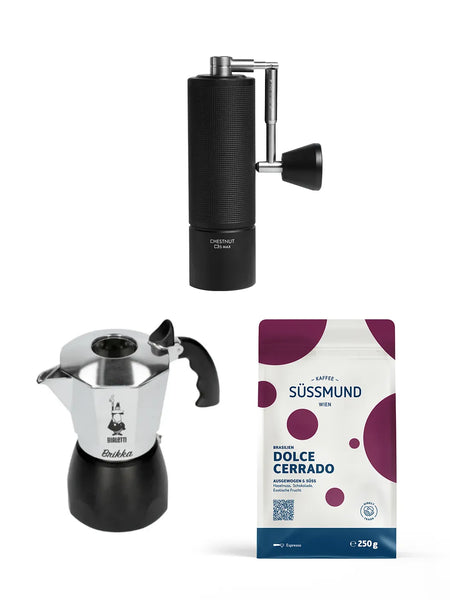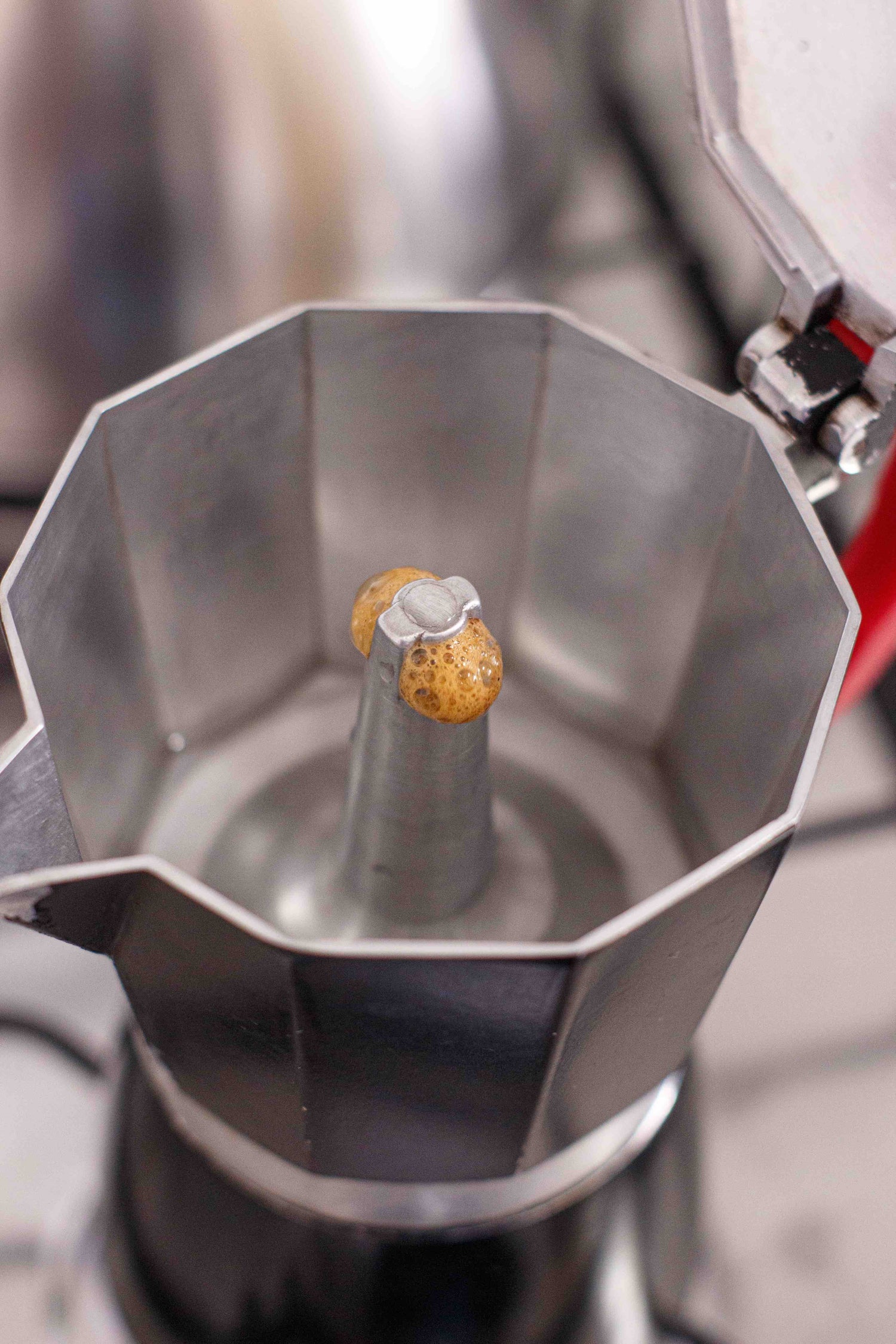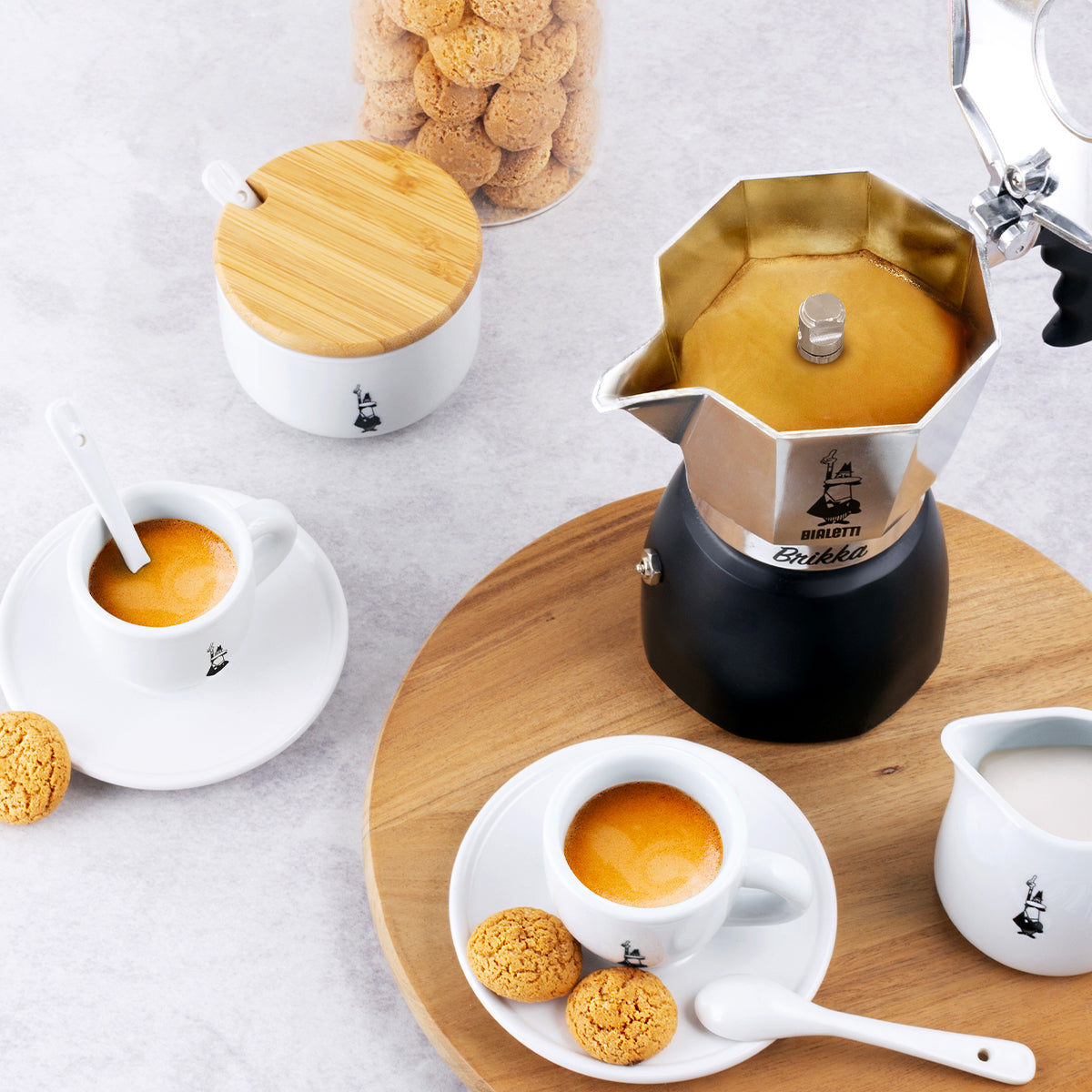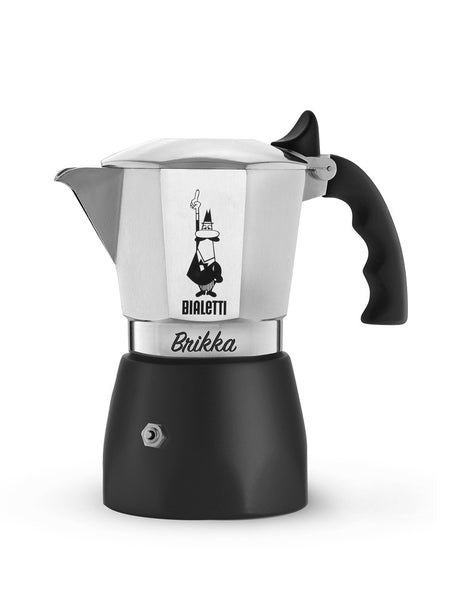Mocha pot
Making coffee with a moka pot remains one of the most popular methods for brewing a strong cup of coffee. The small moka pot, also known as a screw-top pot, espresso pot, or espresso maker, originated from the traditional Italian brand Bialetti. We'll explain what you should look for when buying a moka pot or looking for the right coffee for it.
Availability
Price

The Bialetti moka pot is the classic home coffee brewing method. However, the taste experience often leaves much to be desired. This is due, among other things, to old, dirty pots, pre-ground coffee from the supermarket, and improper preparation. Coffee from a moka pot can taste really good, though.
The new Brikka from Bialetti , the stylish C3S Max hand grinder from Timemore , and our all-rounder from Brazil make it possible. With this set, you can create a first-class, intense mocha with a delicate creamy texture at home with little effort and a small investment.
Product features Bialetti Mocha New Brikka
Bialetti stands for classic mocha with a traditionally simple design, whether at home or on vacation. The iconic mocha pot has been given a new pressure valve, making the mocha taste much sweeter, more balanced, and less burnt. What's more, with the Brikka, you can now even enjoy your mocha with a little crema! This makes the taste much closer to an espresso than with previous models.
The new Brikka is suitable for gas and electric stoves with ceramic hobs.
Cleaning should be done by hand using detergent.
Material: aluminum
Capacity: 150ml (4 cups)
Dishwasher safe: No
Induction hob: With adapter plate also for induction hobs (not included)
Product features Timemore CS3 Max hand mill
GRIND VALUE ADJUSTMENT IN STEPS: Turn the knob from a finer to a coarser grind according to your preference in about half the adjustment steps as C2 (espresso settings start about 8 clicks backward from the starting point); you can use this hand grinder for everything from espresso to filter coffee to French press.
INTEGRATED METAL HOUSING FOR LONGER DURABILITY: The aluminum alloy housing makes the Timemore grinder a convenient coffee grinder for everyday use, while traveling, or camping. Durability is guaranteed by the stainless steel crank, drive shaft, and conical burrs.
COMPACT BUT PRACTICAL: The perfect size and weight of only 473g make the grinder easy to transport and hold in your hand, yet sufficient capacity of 30-35 grams, enough for preparing one or two cups of filter coffee or espresso.
Housing material: aluminum
Grinding discs: stainless steel
Bialetti Coffee Set
€138.90
Mocha pot from Süssmund Kaffee

Buying the right coffee

Coffee enjoyment with passion in 1933
Frequently Asked Questions
How does the moka pot work?
Can you make espresso with a moka pot?
Does the taste differ depending on the moka pot?
What grind size do I need for the moka pot?

